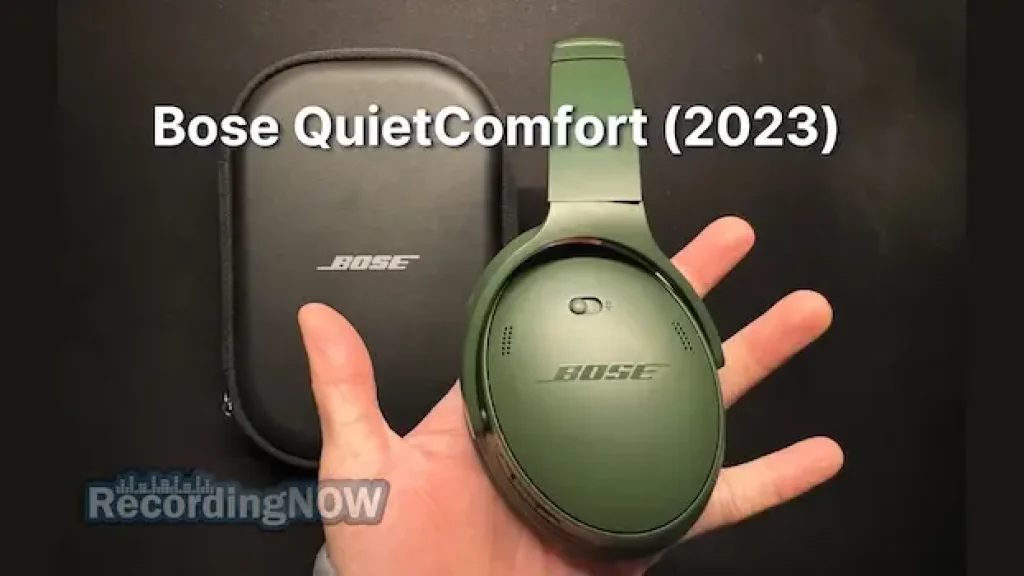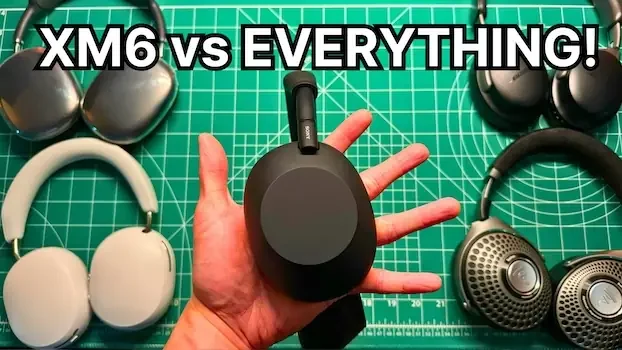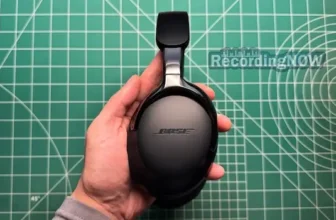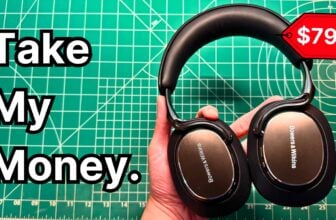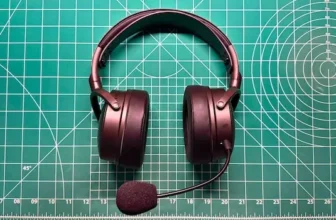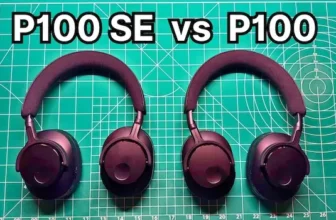In this article, I’m going to share my HONEST Sony WH-1000XM6 Review for those who are wondering whether they are WORTH IT in 2025. I’ll also be comparing the Sony WH-1000XM6 vs XM5, XM4, Bose QuietComfort Ultra, Apple AirPods Max, Sennheiser Momentum 4, Bowers and Wilkins Px7 S3, and more!
I’m going to do my best to share whether these headphones are worth it, and ideally who these headphones are for. I bought these headphones with my own money, and was NOT sponsored, paid, or received a free copy for review. All thoughts are my own.
I’ll be sharing my critical opinion with 10 years of experience as a professional music producer, audio engineer, and tech journalist.
Let’s dive right in!
Sony WH-1000XM6 Review in Short
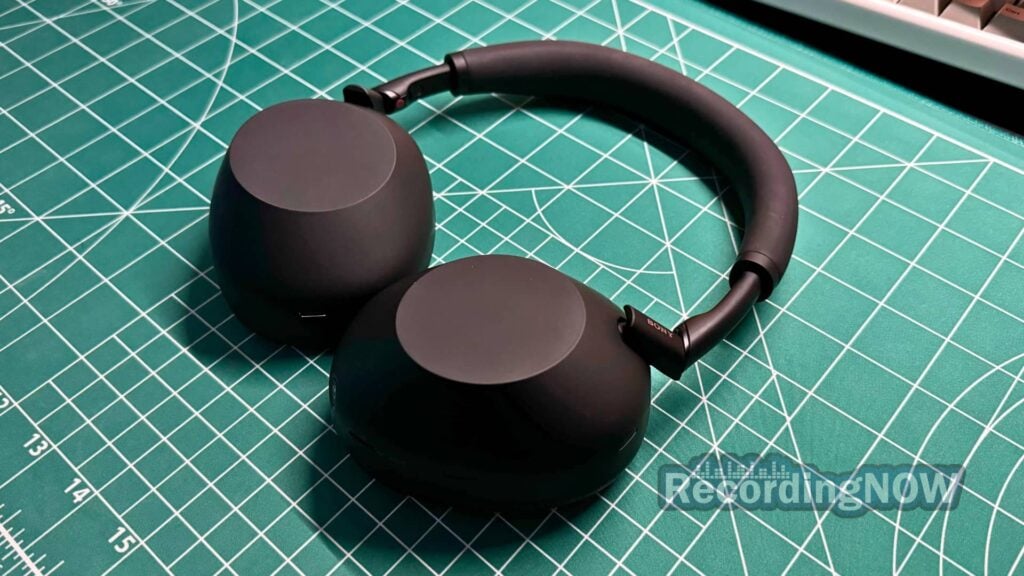
The Sony WH-1000XM6 is the best-sounding Sony ANC headphone to date, and slightly improves on world-class noise cancelling performance. Very lightweight although there is some clamping force, but this should ease up over time like the XM5. Competes very well against previous Sony WH-1000XM5, Sony WH-1000XM4, Sennheiser Momentum 4, Bose QuietComfort Ultra, Apple AirPods Max, Sonos Ace, and Bowers & Wilkins Px7 S3.
Watch the Full Review on YouTube!
Have any QUESTIONS for me?
Leave it in the YouTube COMMENTS and I’ll do my best to get back to you 🙂
Sony WH-1000XM6 Pros and Cons
- Excellent sound quality after EQ
- Best noise cancelling available
- Lightweight
- Hinge issue has been improved
- Clamping force
- Small interior earcup space
- Sibilance without EQ
- Smaller soundstage
Order Here for the LOWEST PRICE AVAILABLE (Do NOT pay retail):
Save up to $40 with LIKE NEW!
Disclosure: These affiliate links may provide a discount and in return, give us a commission in order to keep this website 100% independent to ensure honest unfiltered reviews 🙂
Sony WH-1000XM6 Sound Quality
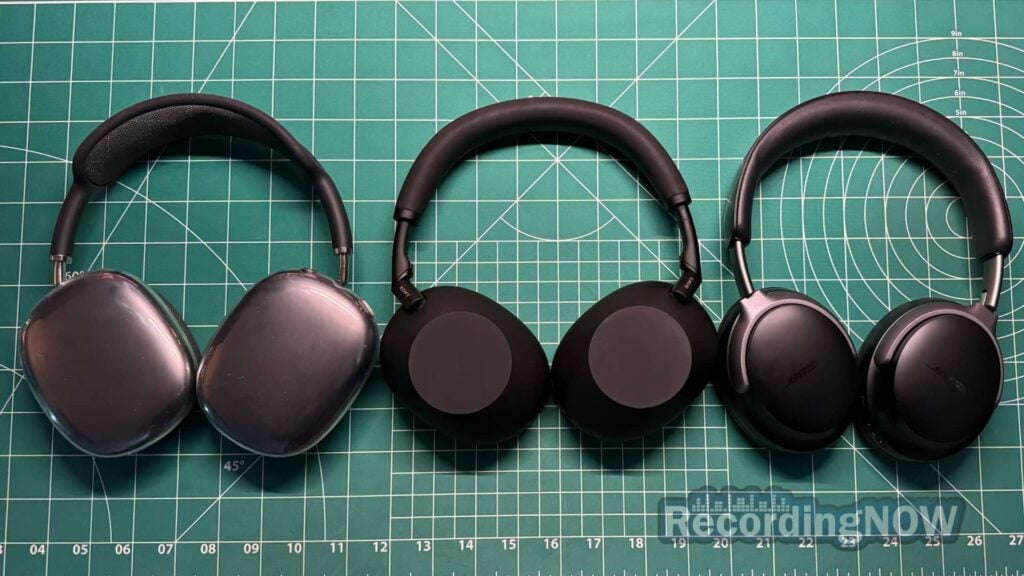
First Impressions on the Stock Sound…
The XM6 is one of the first headphones where I actually recorded my raw first listening impressions and shared them on YouTube.
(That video went on to go viral, hitting around 70,000+ views and taking my channel from ~500 subscribers to over 3,000 subscribers overnight. Thank you all for the support!)
I’ll link the video here below with the timestamp (10:18), but I’ll share a brief summary of what I was hearing right out of the box.
Essentially, I found the XM6 to be the best-sounding “Sony WH-1000” series headphone right out of the box, and this is even compared to the XM5 with EQ, and XM4 with EQ.
I’m mainly speaking in terms of pure sound quality, but also the tonality was more balanced and agreeable, similar to the ULT Wear.
Very large and impressive bass, while still retaining some detail in the treble.
Now, it wasn’t all positive…
My critiques were mainly that the separation, layering, and rather narrow compressed soundstage were not on that audiophile level of headphones like the Bowers & Wilkins Px8, Focal Bathys, or Bang & Olufsen H95. These aren’t very open-sounding at all, everything is right in your face, not unlike the XM5 before it.
Of course, those headphones also cost more.
Also, I noted some sibilance and harshness in the treble, which one YouTube commenter said was “spot on”, and was considering returning them due to this, but awaited my EQ settings.
Lastly, vocals are a bit distant and slightly veiled with a fairly prominent lower-mid bump in the frequencies.
Anyways, I was off to do my “job” and utilize Sony’s new and improved 10-band EQ to see what kind of sound quality we could squeeze out of the XM6…
Best Equalizer Settings for Sony WH-1000XM6
“V1” – Mainly for Pop / Hip Hop
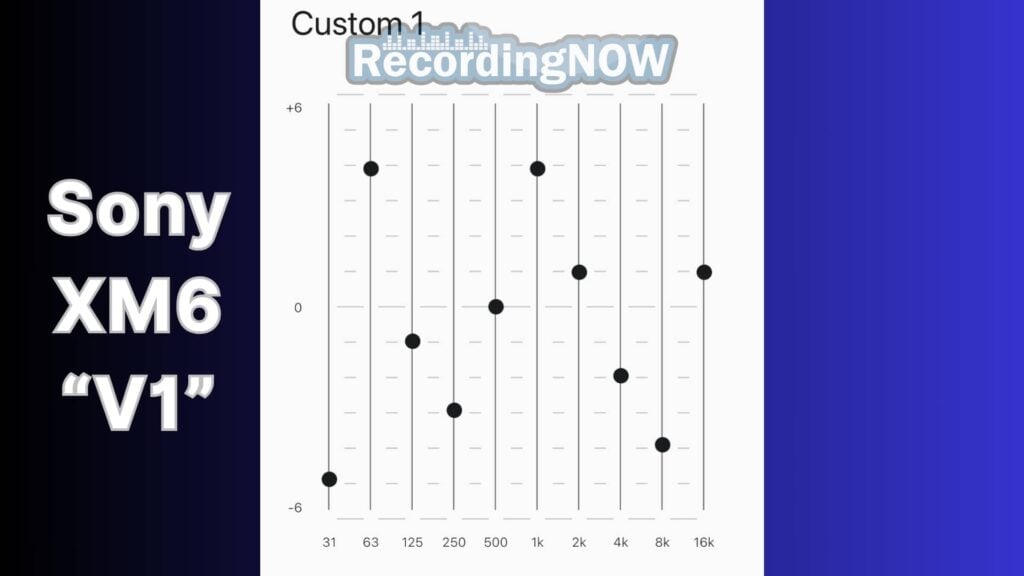
- 31: -5
- 63: +4
- 125: -1
- 250: -3
- 500: 0
- 1k: +4
- 2k: +1
- 4k: -2
- 8k: -4
- 16k: +1
“V2.1” – Mainly for Rock / Metal
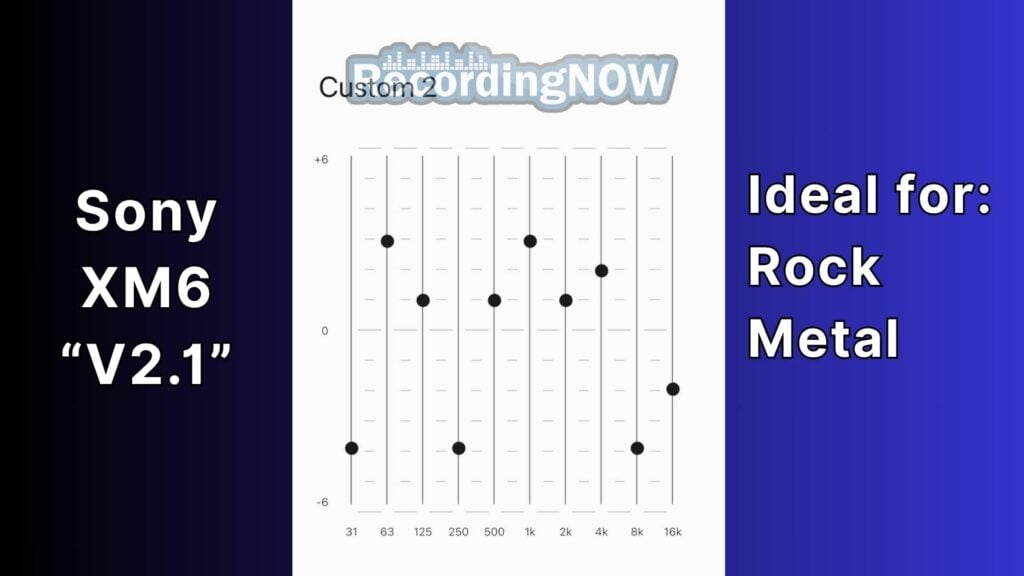
- 31: -4
- 63: +3
- 125: +1
- 250: -4
- 500: +1
- 1k: +3
- 2k: +1
- 4k: +2
- 8k: -4
- 16k: -2
“V3” – Mainly for EDM, Extra Bass, Pop, Hip Hop
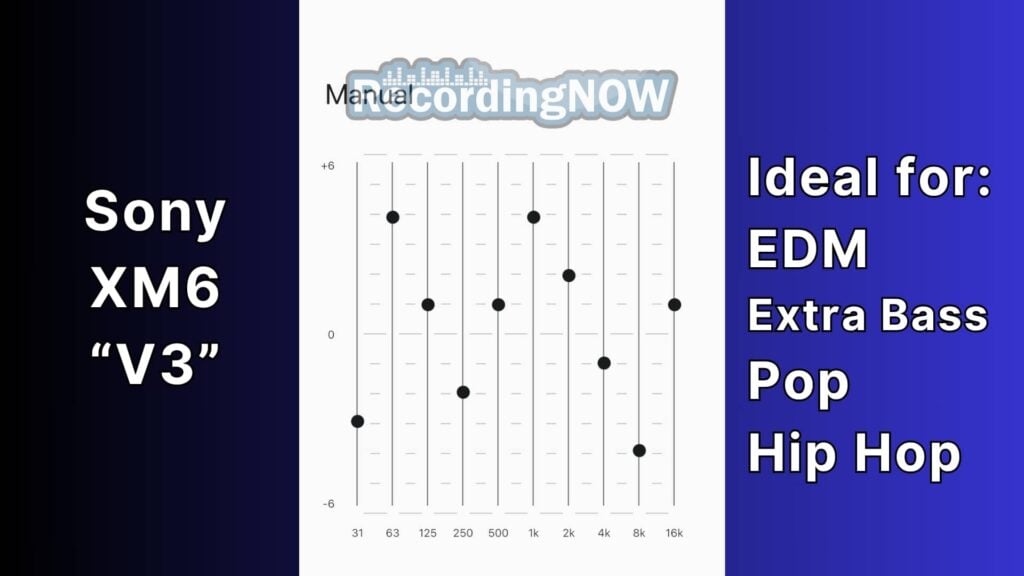
- 31: -3
- 63: +4
- 125: +1
- 250: -2
- 500: +1
- 1k: +4
- 2k: +2
- 4k: -1
- 8k: -4
- 16k: +1
Result: Much better tonality emphasizing a cleaner and controlled bass, more vocal-forward and detailed, and very consumer-friendly “fun” sounding. Sibilance in the treble has mostly been smoothened out, yet is more detailed than stock. More open-sounding and airy with less muffled and veiled sound.
Last Updated: 6-11-25
Sound Quality After EQ…
Sony’s new 10-band EQ is a nice and welcome upgrade from the 5-band EQ for the older XM5 and XM4.
It actually took me a while to dial in my first EQ setting “V1”, as I was struggling with controlling the sibilance as I made my tweaks, and 10-bands offers much more possibilities versus the old 5-band EQ.
That said, I ended up with a very fun, consumer-friendly sound signature that I think leans into the XM6’s strengths beautifully.
The star of the XM6 show is its massive bass response, easily best in its class, while still being able to retain a respectable amount of treble detail. This balancing act is a feat that I think even audiophiles would be impressed by, as usually those “extra bass” headphones can’t manage tonality.
The XM6 is quite impressive but it’s not perfect, as I still think some of the flaws from my initial impression (small soundstage, mediocre separation/layering, sibilance) are still there, although everything has been slightly improved with the help of EQ.
Here’s a few select sound comparisons to get an idea…
vs Sony WH-1000XM5 (after EQ)
Let me start by saying that I wasn’t that impressed by the XM5, and found it a clear half-step below last generation’s favorites like the Momentum 4, AirPods Max, and Bose QC Ultra.
So naturally, the XM6 is superior to the XM5, and potentially the entire last generation’s “mid-range” headphones under $600.
What’s interesting is that the XM6 actually shares some similar sound qualities to the XM5, mainly a narrower soundstage and slightly veiled midrange, although this is much improved in the XM6.
XM6 has much better and improved bass all around, as it’s much cleaner while adding more slam and quantity.
For me personally, I would upgrade from the XM5 to the XM6 just for the sound quality alone, as it’s a big leap forward and I just simply didn’t love the XM5.
vs Sennheiser Momentum 4 (with “V2” EQ)
Listening back and forth, I’m amazed by the Momentum 4’s superior separation and layering, which is more effortless than trying to perform critical listening with the XM6.
The Momentum 4 is immediately more open-sounding with a bigger soundstage, compared to the XM6’s rather narrow “in your face” sound.
(Not to toot my own horn, but I’m really happy with V2 of my Momentum 4 EQ and it just nails tonality. Have also received some positive feedback on YouTube about the new settings.)
That said, the Momentum 4’s once-great bass performance has now been overshadowed by the XM6’s massive bass response.
The XM6 has more slam, impact, and bass quantity. It’s simply better, and with the 10-band EQ, can be shaped how you want.
I still like and enjoy the Momentum 4’s sub-bass, but the XM6 is like a gift for bass-heads.
I think the XM6 is definitively the new king for Pop and Hip Hop, but I may still prefer the Momentum 4 for the other genres. That is, until I create more custom EQ’s for the XM6.
vs Bose QuietComfort Ultra (with “V2” EQ)
Listening back to back, the QC Ultra seems “bass light” in comparison, but much fuller in the mids and treble instead.
I say these two have about the same level of pure sound quality, with the XM6 sounding immediately “fuller” due to its bass while still retaining treble.
I still really love the QC Ultra’s ability to pickup the smaller nuances and micro-details like reverb tails, ad libs, echoes, and more.
Also, the QC Ultra has a wider stereo separation and bigger soundstage. Although this is improved with EQ on the XM6, it’s still not as expansive or immersive.
The XM6 is the more “fun”, bass-forward, consumer-friendly headphone to listen to, although I still would prefer the QC Ultra for critical listening and as an audiophile.
vs Apple AirPods Max
Listening back and forth, I was surprised by how much better the separation and layering is on the much older AirPods Max. It’s just more effortless than the XM6, and on par with the Momentum 4.
I think this exposes a little of the XM6 falling short on some of the more nuanced audiophile technicalities.
But the XM6 immediately has a fuller sound overall, with more balanced tonality after EQ.
I’m starting to realize that the APM is not quite as balanced as I initially perceived, and is pushing forward a lot of treble with a nice clean bump in the upper bass for punchiness. Mids are a bit recessed.
Where the XM6 has a major advantage is the sub-bass and bass slam and quantity in general.
If you’re a bass lover, you’ve gotta go with the XM6.
But the APM surprisingly holds its own if you’re more into detail than bass.
vs Bowers and Wilkins Px7 S3
The Px7 S3 is one of the only “current generation” ANC headphones that is as new as the XM6, having been released around the same time in mid-2025.
When it comes to overall sound quality, I slightly prefer the Px7 S3.
The Px7 S3 is the most “consumer-friendly” Bowers & Wilkins headphone to date, a departure from the mid-focused sound profile of the previous generation Px8 and Px7 S2e.
In this sense, it’s similar to the XM6. They both focus on massive bass and treble, but the Px7 S3 is just cleaner and clearer, with a more realistic timbre.
Neither has a particularly large or wide soundstage, or ultra detailed treble, but the S3 has just enough separation and layering to put it in competition with last generation’s “High-End” range, like the Px8, Bathys, and H95.
This is the best sound quality for around $450 brand new available at the moment.
vs Bowers & Wilkins Px8
Although I’m not the biggest fan of the Px8’s sound profile, it’s clear to my ear that this is where the “high-end” of last generation’s wireless ANC headphone class begins.
I would still put the XM6 in the “mid-range” tier, but the difference is not going to be as obvious to non-audiophiles.
Again, we talk about the separation, clarity, and layering, which the XM6 just doesn’t quite scratch the itch for me.
Where these two are equal is in both having a smaller, narrower soundstage. They both have a certain “in your face” sound without a lot of spacing or breathing room.
Px8 has much, much better mids and is where it really shines.
Timbre is excellent, as many instruments and vocals can sound more realistic and “3D” than ANY of the mid-range tier of headphones.
But the Px8 lacks in the bass, specifically sub-bass slam and quantity. It has lots of impact in the upper bass, but this is an exaggerated bump that leaks into the lower mids, creating the “muffled” sound profile that is so polarizing online.
If you’re seeing a running theme here, the XM6’s bass is where it outshines most of these competitors.
I’d choose the XM6 for modern music, but the Px8 excels everywhere else.
vs Focal Bathys
Honestly, I wouldn’t mind calling the XM6 with “V1 EQ” the “Baby Bathys”.
It somewhat matches the Bathys tonally, focusing on a large impactful bass while still retaining details in the mids and treble. Although the Bathys is even more balanced due to much better mids.
Like the Px8, the Bathys is a clear half-step above the XM6 in sound quality.
For me, the Bathys is just so excellently tuned and balanced, that it requires no EQ.
Other than better separation, layering, clarity, and micro-details, the Bathys has a much bigger soundstage with better spacing and imaging.
The Bathys is much closer to sounding “open-back” than the XM6.
Simply put, for sound quality, the Bathys wins no contest.
vs Bang & Olufsen Beoplay H95
The H95 is the third in this “high-end” range of wireless ANC headphones that is also a clear half-step above the XM6 in sound quality.
The H95 has a very V-shaped sound profile with recessed mids that is not unlike the XM6.
But what the H95 does very well is tons of resolution and detail in the treble, albeit a bit sibilant at times, and a very clean and impactful sub-bass.
The XM6 gets sibilant as well, but sadly I’m not getting that resolution and detail, not to mention the separation and layering I keep mentioning above.
The XM6 has more bass quantity and slam overall, but the H95 is much more controlled and focused bass, which I slightly prefer.
The H95 is not perfect by any means, but I’d personally prefer listening to it or the Bathys over the XM6 for most occasions.
I also throw the Px8 in there, depending on my mood if I wanted to relax more or was in the mood for Acoustic, Classical, or Jazz.
Overall thoughts on Sound Quality
Overall, the XM6 finds itself in an in-between state of being slightly superior to last generation’s mid-range (under $600), while not quite reaching last generation’s high-end ANC headphones.
Listening back and forth between its actual main competitors, like the AirPods Max, Momentum 4, and QC Ultra, it’s certainly not a quantum leap in sound quality – especially stock.
But thanks to the new 10-band EQ, we’re able to extract a lot of sound potential from the XM6, especially as I dial in additional EQ’s for the other genres in the future.
Oh! And I almost forgot to mention the new “Cinema Mode”, which does a great job with spatial audio and simulating actually watching a movie in a theatre. Love this feature, and it fixes the lack of soundstage when consuming media OTHER than music. Movies, TV, YouTube, etc.
This is the most “fun” bass headphone with a touch of audiophile to please most people (especially once you factor in the ANC, comfort, etc.)
Sound Quality Score: 9.0 out of 10 (after EQ)
Sony WH-1000XM6 Comfort
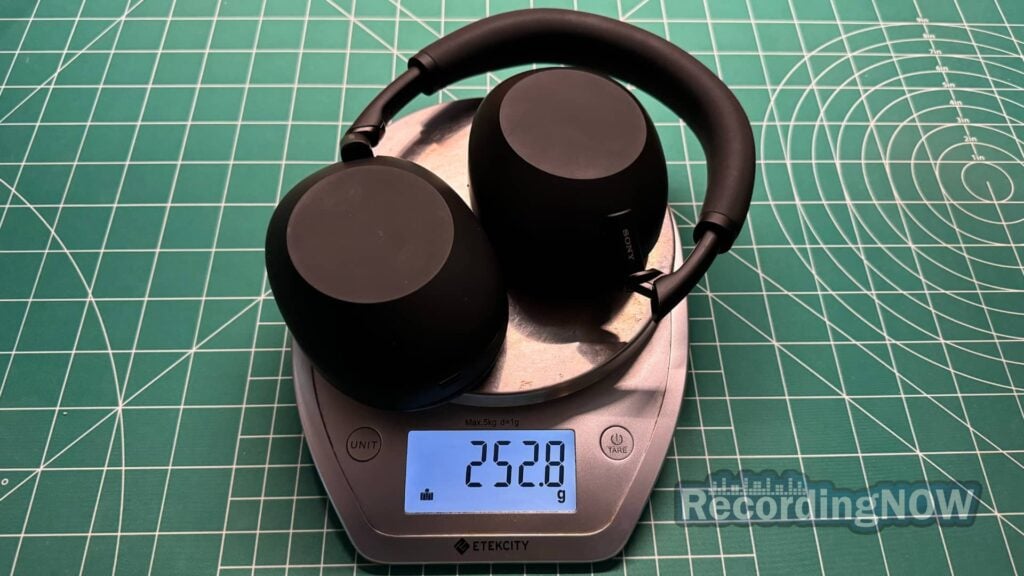
The Sony XM6 is actually one of the lighter in this class, as weighed on my scale:
- Bose QuietComfort – 236.1 grams
- Sony WH 1000XM5 – 245.9 grams
- Sony WH 1000XM4 – 251.6 grams
- Sony WH-1000XM6 – 252.8 grams
- Bose QuietComfort Ultra – 254.4 grams
- Beats Studio Pro – 268.6 grams
- Sennheiser Momentum 4 – 292.9 grams
- Bowers and Wilkins Px7 S2e – 305.2 grams
- Sonos Ace – 318.1 grams
- Bowers & Wilkins Px8 – 320.1 grams
- Bang & Olufsen H95 – 323 grams
- Focal Bathys – 350 grams
- Apple AirPods Max – 387.8 grams
Just a few grams heavier than the XM4 and XM5, the XM6 is one of the lightest headphones for this class, and it feels like that.
They improved the headband over the XM5 by making it wider and having a square-ish design as opposed to the oval.
One warning is the clamping force, which is quite strong from the factory. But I expect this to loosen up nicely over time, if it’s similar to the XM5.
Also, the interior earcup space is still small like the XM5, and my ears are pressing against the fabric, and slightly “pinned” back due to the clamping force.
Overall, I’m going to give the XM6 the benefit of the doubt because if the clamping force loosens up just like the XM5, these will be very, very comfortably to wear due to its lightweight and improved headband.
One benefit of the clamping force and lightweight is that these make excellent workout headphones! In fact, I will likely designate these for that moving forward.
I think its comfort ceiling is just slightly below the QC Ultra, Sonos Ace, and Bowers & Wilkins Px7 S3.
Comfort Score: 4.5 out of 5
Features / Build Quality / Battery Life / Noise Cancelling
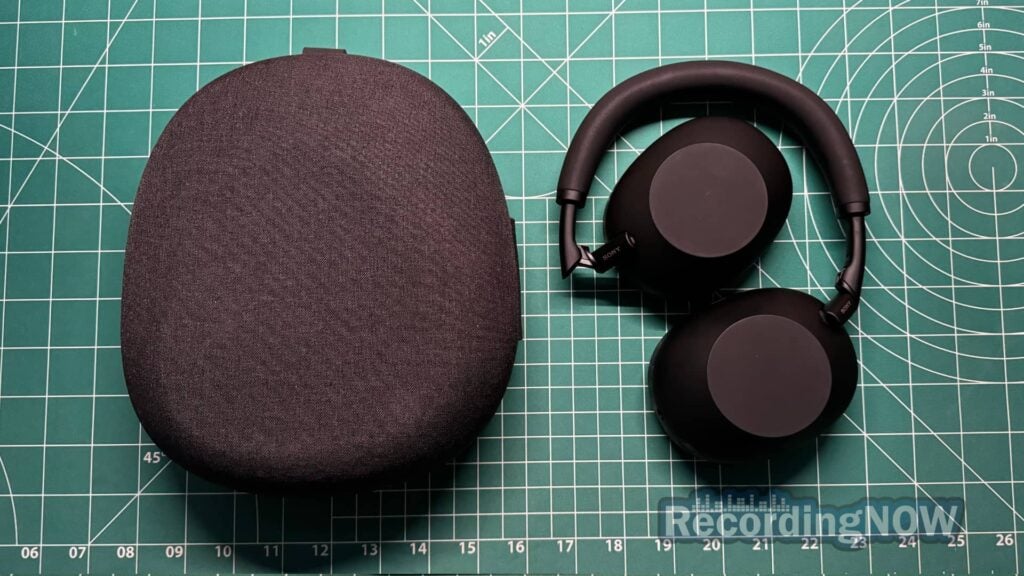
Features
The XM6 was released in May 2025 and has the typical modern wireless ANC headphone features:
- Multiple built-in microphones for taking calls
- “Cinema Mode” (spatial audio for movies, TV, etc)
- Bluetooth 5.3 LE with LDAC
- Active Noise Cancelling
- Transparency Mode
- Ability to turn either mode OFF
- Companion Smartphone app to customize EQ, settings, and update firmware
- Includes a compact premium Hard Shell case
- USB-C to USB-C charging cable
- Stereo cable
The one notable new feature is the “Cinema Mode” which I’m LOVING!
I love to watch movies, TV, anime, and YouTube, and I think watching all of the above in “Cinema Mode” fixes the soundstage issues from listening to purely music.
These kind of features tend to be gimmicky, but I would say they executed this very well, and it seems comparable to Dolby Atmos.
Sony WH-1000XM6 Build Quality
Let’s be real here, $450 retail and it’s still mostly plastic like the XM5.
One potential major improvement is the hinge issue from the XM5, which now seems to include an aluminum metal piece in the middle of the hinge.
Let’s hope this fixes the broken hinge issue long-term, but only time will tell. I’m hopeful though.
That said, this build quality is about on par with the Momentum 4, but clearly below the QC Ultra, AirPods Max, Sonos Ace, Bowers & Wilkins, Focal, Bang & Olufsen, etc.
Sony WH-1000XM6 Battery Life
The Sony WH-1000XM6 is rated at 30 hours of battery life on a single charge, which is above average in this class. This is the same as the previous XM5 and XM4.
This is more than the AirPods Max at 20 hours, and Bose QC Ultra at 24 hours.
Tied with the Px7 S2e and Sonos Ace at 30 hours, but overshadowed by the Sennheiser Momentum 4 at a class-leading 60 hours.
There is a “Fast Charge” feature that provides 3 hours of listening time from just 3 minutes of charging.
Sony WH-1000XM6 Noise Cancelling Performance
Ahh this is what many of you may have came for, in addition to sound quality of course.
I regarded the previous XM5 and QC Ultra as “world-class” and being the best ANC headphones out.
Naturally, the XM6 should simply be better than those – right?
Well, let me start by saying the Sony WH-1000XM6 noise cancelling performance is excellent, and the best I’ve tested yet.
That said, the difference doesn’t seem to be as major as the anticipated update suggests. Maybe 10% better at most?
Perhaps the XM5 and QC Ultra were simply pushing the upper limits of ANC, but the XM6 sounds somewhat similar.
Either way, it’s really, really good – and they improved the “Transparency Mode” immensely from the muffled-sounding XM5.
Also, one hidden benefit of Sony’s ANC is that it doesn’t seem to be affected by moving/walking, unlike others. One example is the QC Ultra which sometimes sounds like it’s “adjusting” or “popping” when moving.
So if you plan to be moving around, in public transport, or working out, it might be safer to go with the XM6 which won’t be affected by constant movement.
If you want the best for ANC, this is the easy safe choice.
Features / Build Quality / Battery Life / Noise Cancelling Performance Score: 5 out of 5
Value
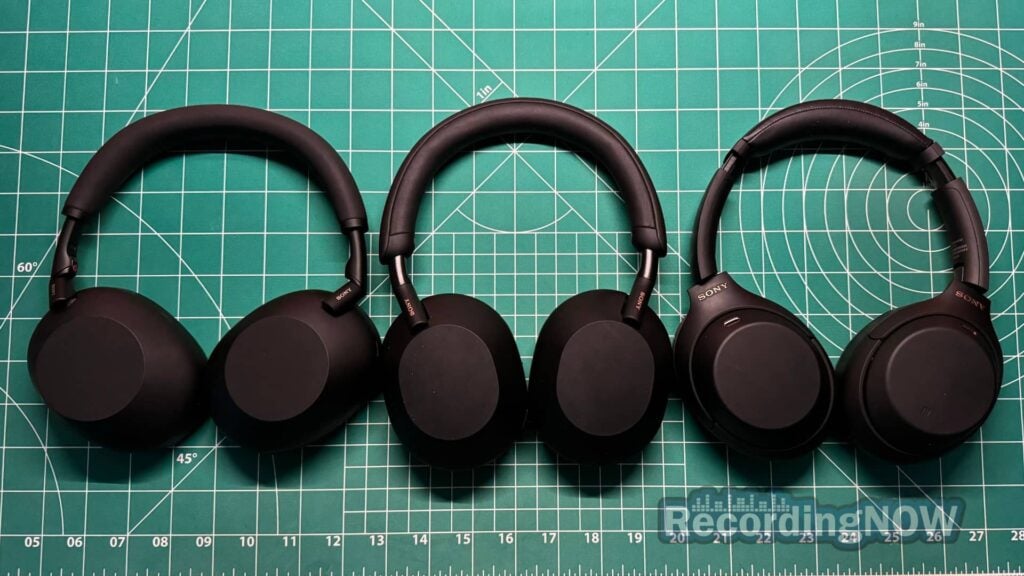
The Sony WH-1000XM6 currently retails at $449.99, but can be found a few dollars cheaper on Amazon.
Also, you can save up to $40 if you get them Used in Like New condition (links below).
So these are expensive, yes, but the truth is these are one of the strongest all-arounders you can find on the market today.
Not many headphones in this class have ALL the categories of sound quality, noise cancelling performance, and comfort.
In fact, only the Bose QC Ultra and Bowers & Wilkins Px7 S3 immediately comes to mind. The Momentum 4 is a great value, but falls short on noise cancelling and comfort compared to all the above.
Also bear in mind that the “high-end” range of this class can cost $700 to almost $2,000 and still not have this level of noise cancelling performance and perhaps comfort.
So, although expensive, I do actually think the XM6 justifies its price as an overall package.
Value Score: 4.0 out of 5
Overall Scoring Breakdown
Sound Quality: 9.0 / 10 (after EQ)
Comfort: 4.5 / 5
Features / Build Quality / Battery Life / Noise Cancelling: 5 / 5
Value: 4.0 / 5
Total: 22 / 25
Is the Sony WH-1000XM6 WORTH IT?

Ultimately, it’s hard to find a better overall package currently than the Sony XM6, and the only ones that immediately come to mind is the Bose QC Ultra and Bowers & Wilkins Px7 S3.
The Momentum 4 is an amazing value for its sound quality, but lacks the noise cancelling performance and comfort of the above. I’d say the Momentum 5 would be a better match once available.
The XM6 is now part of the “top of the food chain” for the Mid-Range wireless ANC headphone class, but still falls short on sound quality and build quality compared to last generation’s High-End above $600.
With prices coming down for High-End headphones like the Bowers & Wilkins Px8 and Focal Bathys, it may be worth taking a look at the High-End to see what you can get, depending on your priorities.
Personally, I would (and did) buy the Sony XM6 with my own money, as they can be a fantastic travel and workout headphone. But, I may still prefer the Bowers & Wilkins Px7 S3, followed by the Bose QC Ultra, due to both having better comfort, comparable noise cancelling, and excellent sound quality after EQ.
Some very Strong Alternatives in this class of noise cancelling headphones are:
- Bose QuietComfort Ultra
- Apple AirPods Max
- Bowers and Wilkins Px7 S3
- Sennheiser Momentum 4
- Bowers & Wilkins Px8
- Bowers & Wilkins Px7 S2e
- Focal Bathys
- Bang & Olufsen Beoplay H95
- Sony WH-1000XM5
- Bose QuietComfort (2023 model)
- Beats Studio Pro
Some Relevant Comparisons in this class of noise cancelling headphones are:
- Sony WH-1000XM6 vs WH-1000XM5
- Sony WH-1000XM6 vs WH-1000XM4
- Sony WH-1000XM6 vs Bose QuietComfort Ultra
- Sony WH-1000XM6 vs AirPods Max
- Sony WH-1000XM6 vs Bowers and Wilkins Px7 S3
- Sony WH-1000XM6 vs Sennheiser Momentum 4
- Sennheiser Momentum 4 vs Bose QuietComfort Ultra
- Bose QuietComfort Ultra vs Sony WH-1000XM5
I highly recommend you check those out next!
Lastly, if you’d like to save some money and keep supporting RecordingNOW.com’s 100% independent, unbiased reviews, do consider using some of our affiliate links below to shop and even just compare prices. We purchase all products we review with our own money to maintain the highest level of integrity, and your support goes into that plus a continuously improving site experience.
Order Here for the LOWEST PRICE AVAILABLE (Do NOT pay retail):
Save up to $40 with LIKE NEW!
Disclosure: These affiliate links may provide a discount and in return, give us a commission in order to keep this website 100% independent to ensure honest unfiltered reviews 🙂
How We Tested and Our Methodology
RecordingNOW.com is a 100% independent publisher with over 10 years of experience testing and reviewing consumer electronics and headphones.
We currently purchase every product we test with our own money, and are not paid by any company or manufacturer to influence our opinions or decisions.
After purchasing the product, we conduct up to hundreds of hours of detailed hands-on testing in a controlled, acoustically-treated environment. Then, take them out to the real world for practical tests.
ODi Productions is our resident expert and author of this article, with 10 years of experience as a professional music producer, tech journalist, and audiophile.
Updates
- June 11th, 2025: Updated “V2.1” EQ setting for Rock/Metal genres.
- June 6th, 2025: Added “V3” Equalizer setting for EDM, Extra Bass, Pop, Hip-Hop.
- May 30th, 2025: Added “V2” Equalizer setting for Rock and Metal genres.
Read Next
Bose QuietComfort Ultra Review


Bowers and Wilkins Px7 S3 Review

Sennheiser Momentum 4 Headphone Review
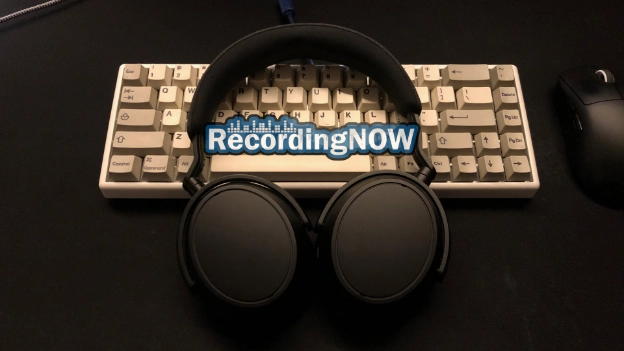
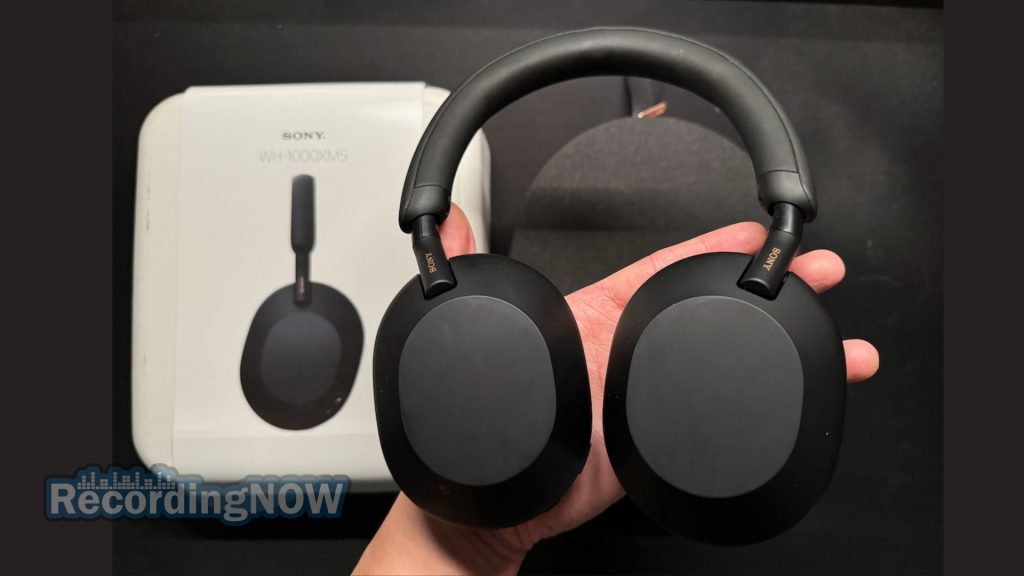
Bowers and Wilkins Px7 S2e Review


Bose QuietComfort Review (2023 Model)
